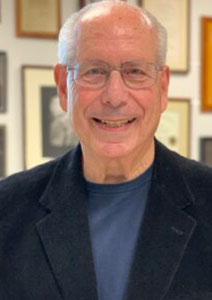Case Western Reserve awarded $6.1 million from National Institute of Biomedical Imaging and Bioengineering to advance body tissue engineering
A team led by tissue-engineering pioneer and Case Western Reserve University biologist Arnold Caplan aims to close the gap between academic promise and clinical and commercial reality in the still-nascent science of generating new bodily tissues.
Case Western Reserve researchers are working with the nonprofit Advanced Regenerative Manufacturing Institute (ARMI) to develop novel manufacturing technologies for growing new tissues from component parts—essentially automating the precision production of those tissues to accelerate their fabrication and use.
The goal of tissue engineering is to assemble functional constructs that restore, maintain, or improve damaged tissues or whole organs, according to the National Institutes of Health, but actual commercial successes have been limited. Artificial skin and cartilage, for example, have been approved by the U.S. Food and Drug Administration, but have had only limited use in human patients.
The Case Western Reserve-ARMI team intends to change that.

“The fact that tissue-engineered products are not available commercially highlights a large and pressing unmet demand,” said Caplan, who directs the center and has a secondary appointment at the Case Western Reserve School of Medicine. “The goal of this project is to develop technological solutions to transition tissue engineering from laboratory scale to the world of commercial manufacturing.”
ARMI is a Manchester, New Hampshire-based organization headed by Dean Kamen, the well-known inventor (the Segway and iBOT, among more than 1,000 patents) and founder of FIRST (For Inspiration and Recognition of Science and Technology) in 1989, a nonprofit designed to get kids to get excited about science.
The research team and center are being supported by a five-year, $6.1 million grant from the National Institute of Biomedical Imaging and Bioengineering (NIBIB), a division of the National Institutes of Health.
Thinking like a manufacturing company
Tissue engineering is about 35 years old in its present form, building from the earlier, broader field of biomaterials. It refers to the practice of combining cells, scaffolds (the materials engineered to enable cells to form new tissues), and biologically active molecules into functional tissues.
“Tissue engineering is already front and center among researchers worldwide,” said Harihara Baskaran, chair of chemical and biomolecular engineering at Case Western Reserve and a project leader at the new center. “But what is sorely lacking is a sense of manufacturability introduced early in the process. Hundreds of tissue-engineered products are created, but few ever actually make it to a clinical setting.”
To address that, the research team led by Case Western Reserve will focus on developing sensor technologies for use during cell identification, and the steps of tissue fabrication and maturation.
“We intend to incorporate all of those components into a scalable, modular, automated manufacturing platform prototyped by ARMI, to ensure real-time quality control,” said Jean Welter, one of the center’s associate directors and research associate professor of biology.
One of the main reasons that transitioning tissue-making from the lab to manufacturing doesn’t happen is variability in the product introduced by human interventions during biofabrication, said Tom Bollenbach, one of the center’s associate directors and ARMI’s chief technology officer.
“The collaboration between Case Western Reserve researchers and ARMI’s will generate sensors that will facilitate the manufacturing of tissue engineering experiments to clinically available therapeutic products,” Bollenbach said.
New name, new focus for CWRU center
The center, now known as the Center for Modular Manufacturing of Structural Tissues (CM2OST) at Case Western Reserve, is actually a renewal of a center at the university funded by the NIBIB five years ago.
Initially known as the Center for Multimodal Evaluation of Engineered Cartilage, it has since broadened its work to include other human tissues beyond cartilage.
The new focus on making manufacturing of artificial tissue is also the next step for Caplan in a career focused on the wider field of stem cells.
Now an international leader in biology and regenerative medicine research, he was the first to discover and describe mesenchymal stem cells, the cornerstone for many regenerative therapies. Caplan has been a faculty member and researcher at Case Western Reserve for more than a half century, arriving in 1969.
Caplan is joined by Welter, Baskaran and Bollenbach as principals at the center. Other principals are Rodrigo Somoza, research associate professor of biology at CWRU; Seunghee Margevicius from Case Western Reserve School of Medicine; and Mary Clare McCorry and Richard McFarland from ARMI.
Other collaborators include researchers from Case Western Reserve; University of California-Berkeley; Mayo Clinic; University of Virginia; University of Pittsburgh; Auburn University; Boise State University; University of Miami; University of Illinois; and University of Michigan.
For more information, contact Mike Scott at mike.soctt@case.edu.
This article was originally published Sept. 28, 2022.


